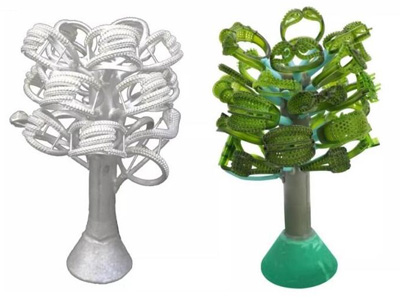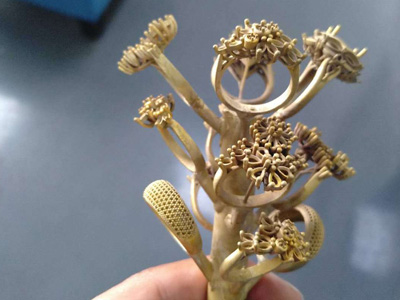Here's an overview of the stainless steel jewelry production processes of wax injection, wax tree, casting, finishing, and gold plating from Minlonn Jewelry.
Wax Injection: In this process, a wax replica of the jewelry design is created using a mold. The mold is injected with liquid wax and then cooled to harden the wax in the shape of the jewelry design. The wax is then removed from the mold, and any necessary adjustments are made to the wax replica.


Wax Tree: Once the wax replicas are completed, they are attached to a wax tree, which is a central sprue attached to a series of branches that hold multiple wax replicas. The tree is then coated with a ceramic shell to create a mold for casting.


Casting: The wax tree mold is heated to remove the wax, leaving behind a hollow mold. Stainless steel is melted and poured into the mold, filling the hollow space left by the wax. Once the metal has cooled and hardened, the ceramic shell is removed, and the jewelry pieces are removed from the tree.
Finishing: This process involves removing any excess metal or casting material from the jewelry pieces and polishing them to create a smooth, shiny surface. Finishing techniques include sanding, filing and buffing etc.






IP Plating: The final step in stainless steel jewelry production is ion plating.
Preparation: Before ion plating can begin, the stainless steel jewelry must be cleaned thoroughly to remove any dirt, oils, or other debris that may interfere with the plating process.
Base coating: To prepare the surface of the stainless steel for plating, a thin layer of a base metal such as nickel or copper is applied to the jewelry. This creates a surface that will bond more easily with the gold plating.
Gold plating: The jewelry is then immersed in a solution of gold electroplating solution. An electric current is passed through the solution, causing the gold ions to bond with the surface of the jewelry. The thickness of the gold plating layer can be controlled by adjusting the time and current used in the plating process.
Final coating: After the gold plating is complete, a final protective coating may be applied to the jewelry to protect the gold layer and improve its durability.
It's important to note that the gold plating process can vary depending on the manufacturer and the type of jewelry being produced. Additionally, the thickness and durability of the gold plating layer can be influenced by factors such as the quality of the base coating and the length of time the jewelry is immersed in the electroplating solution.